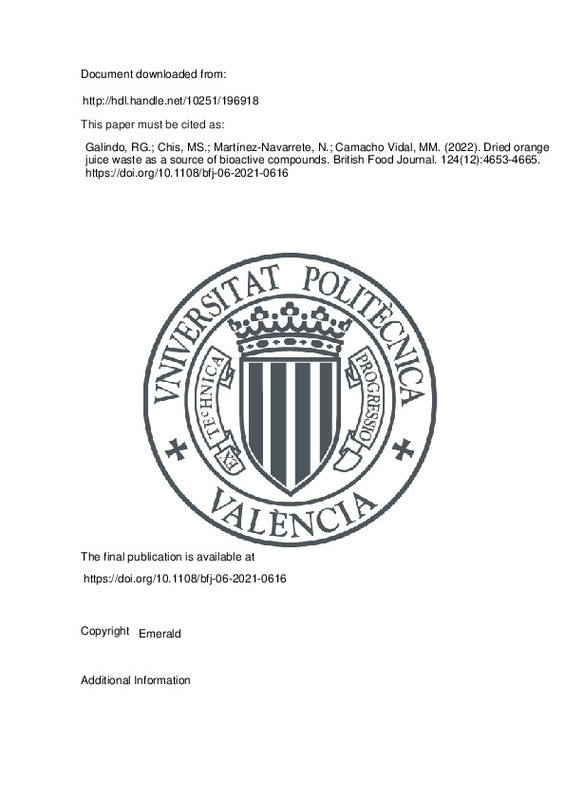JavaScript is disabled for your browser. Some features of this site may not work without it.
Buscar en RiuNet
Listar
Mi cuenta
Estadísticas
Ayuda RiuNet
Admin. UPV
Dried orange juice waste as a source of bioactive compounds
Mostrar el registro completo del ítem
Galindo, RG.; Chis, MS.; Martínez-Navarrete, N.; Camacho Vidal, MM. (2022). Dried orange juice waste as a source of bioactive compounds. British Food Journal. 124(12):4653-4665. https://doi.org/10.1108/bfj-06-2021-0616
Por favor, use este identificador para citar o enlazar este ítem: http://hdl.handle.net/10251/196918
Ficheros en el ítem
Metadatos del ítem
| Título: | Dried orange juice waste as a source of bioactive compounds | |
| Autor: | Galindo, Rosa Gabriela Chis, Maria Simona | |
| Entidad UPV: |
|
|
| Fecha difusión: |
|
|
| Resumen: |
[EN] Purpose The waste generated in the process of obtaining orange juice (J) may be used as a natural source of bioactive compounds, thus contributing to the profitability and sustainability of the process. To offer orange ...[+]
|
|
| Palabras clave: |
|
|
| Derechos de uso: | Reconocimiento - No comercial (by-nc) | |
| Fuente: |
|
|
| DOI: |
|
|
| Editorial: |
|
|
| Versión del editor: | https://doi.org/10.1108/bfj-06-2021-0616 | |
| Código del Proyecto: |
|
|
| Agradecimientos: |
The authors thank the Ministerio de Economía, Industria y Competitividad and the Vicerrectorado de Investigación de la Universitat Politècnica de València for the financial support given through the Projects AGL 2017-89251-R ...[+]
|
|
| Tipo: |
|







![[Cerrado]](/themes/UPV/images/candado.png)


